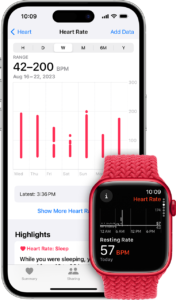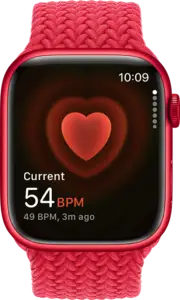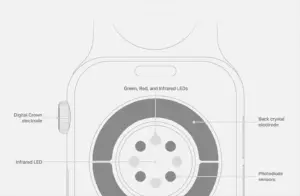Potential Function of Apple Watch: Keep track of Heart Rate
Monitor your heart with the Apple Watch, a device with immense potential.This innovative wearable offers the ability to track and analyze your heart rate, providing valuable insights into your overall health and fitness.

With its advanced features and technology, The Apple Watch is poised to revolutionize how we monitor and manage our cardiovascular well-being.

Occassion
Celebrate any party with plenty of food and drink, but remember to prioritize your heart health before returning to work! Wear the Apple Watch.
The Health App’s heart category includes heart-related records like heart rate alerts, arrhythmia alerts, electrocardiograms, atrial fibrillation records, and more to help us understand our heart health. List of articles.
1. Potential Function: Psychological fitness
2. Potential Function: Notification of high and low heart rates.
3. Potential Function: Notification of an irregular cardiac rhythm.
4. Potential Function: ECG App.
5. Potential Function: atrial fibrillation recording.

Function 1: Psychological fitness
The cardiac fitness function provides a scientifically proven estimate of VO2 Max (the maximum amount of oxygen the body can use during exercise), which the American Heart Association considers to be a powerful predictor of overall health.
While cardiac fitness is usually only measured in specialist clinics or hospitals, Apple Watch estimates cardiac fitness levels through sensors, allowing users to observe changes in indicators over the past week, month, or year.
Beginning in 2019, the Apple Heart and Movement Study led by Apple found that participants with higher levels of heart fitness spent an average of more than 15 minutes more active per day than participants with lower levels.
Participants recorded a higher proportion of physical training in the morning, an average of 36%, compared with 28% of participants with lower fitness levels. Conversely, participants with lower levels of mental fitness were more likely to record activities at night.
The proportions of participants with higher and lower fitness levels who recorded activities at night were 28.5% and 36.2%, respectively.
Since low VO2 max for cardio fitness is associated with the risk of serious long-term health problems, users wearing Apple Watch can also choose to receive notifications when the category drops to “low” to remind themselves that they can It can be improved by exercising more frequently or more rigorously, and it can be continuously recorded to see whether there is improvement.
Function 2: High and low heart rate notification
A heart rate that is too high or too low can be a sign of a serious health problem, and Apple Watch can automatically detect unusually high or low heart rates in the background while the user is resting.
Users will be notified if their heart rate exceeds 120 beats/min or falls below 40 beats/min for 10 minutes while engaging in static activity.
Of course, everyone’s physical condition is different, and users can also adjust the heart rate per minute (BMP) threshold or turn these notifications on or off.
Function 3: Irregular heart rhythm notification
The arrhythmia notification feature on Apple Watch will check your heartbeat from time to time to confirm whether there is an arrhythmia that may be atrial fibrillation (AFib). Atrial fibrillation is an irregular heartbeat in which the atria and ventricles beat out of sync.
Some people with atrial fibrillation will not have any symptoms. If left untreated, atrial fibrillation can lead to heart failure or blood clots, which can lead to a stroke.
Function 4: ECG App
Users with symptoms such as a rapid heartbeat or missed heartbeat can record the electrical potential changes of the heart through an electrocardiogram.
The method of operation is to use the electronic heart rate sensor built in the digital crown and crystal glass back to record.
Therefore, when operating, make sure that the Apple Watch is tightly attached to the wrist, open the ECG app on the Apple Watch, place your arm on the table or your lap, place the finger of the other side that is not wearing the watch on the Digital Crown, and wait patiently for about 30 seconds.
The result will be displayed and sent to the app at the same time.
The recorded waveforms, results, date, time, and any symptoms will be recorded on the app and can be exported to PDF from the “Health” app for sharing with clinicians.
Function 5: Atrial fibrillation recording
Users who have been diagnosed with atrial fibrillation by a doctor can use Apple Watch’s atrial fibrillation recording feature to record an estimate of how long their heart showed signs of atrial fibrillation.
Research shows that the duration of atrial fibrillation may be related to symptom severity, quality of life issues, and the risk of complications.
The “Atrial Fibrillation Record” also allows users to record specific life factors, such as sleep, exercise, and weight, that may affect the duration of atrial fibrillation.
Before recording atrial fibrillation, the health app will remind you that you need to be diagnosed with atrial fibrillation by a doctor, and further relevant design will be done to provide accurate monitoring data.

















